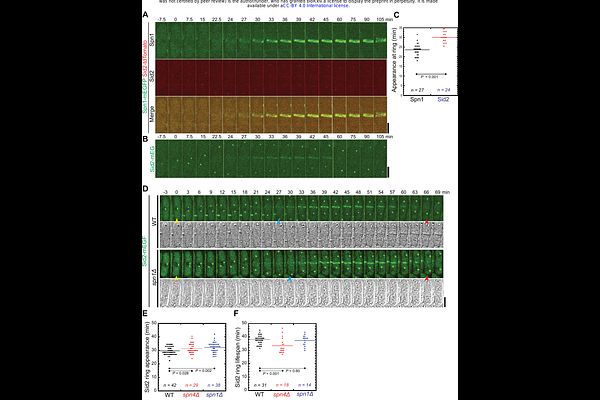Localizations and functions of septins are susceptible to epitope tagging

Localizations and functions of septins are susceptible to epitope tagging
Gregory, J. R.; Llaneza, I. M.; Osmani, A. H.; Gosselin, H. E.; Wu, J.-Q.
AbstractSeptins are hetero-oligomeric cytoskeletal proteins that assemble into filaments and scaffolds on the plasma membrane to aid cytokinesis, morphogenesis, and other processes. Epitope tagging is widely used in studying septin localizations and functions. However, their functionalities are rarely tested rigorously because of technical challenges. Fission yeast provides an ideal genetic system to test functionalities of tagged septins. Septins Spn1 and Spn4 localize exclusively to the division site as double rings during cytokinesis with mEGFP or mYFP tags. However, both septins also localized to puncta or linear structures across the plasma membrane during interphase when tagged with tdTomato. It was proposed that these interphase septin structures are important for the localizations and functions of several proteins including the NDR-kinase Sid2 and active Cdc42. By analyzing cell morphology, cytokinesis/septation defects, and genetic interactions between tagged septins and the arrestin art1{triangleup} and anillin mid2{triangleup}, we find that septins tagged with tdTomato or 3HA are not functional. Moreover, Sid2 appearance at the division site is later than septins and delayed in septin mutants, contrary to previous report. Our data emphasize the need for rigorous functional tests of tagged septins and caution in interpreting function and localization data because septin polymers are susceptible to perturbations.